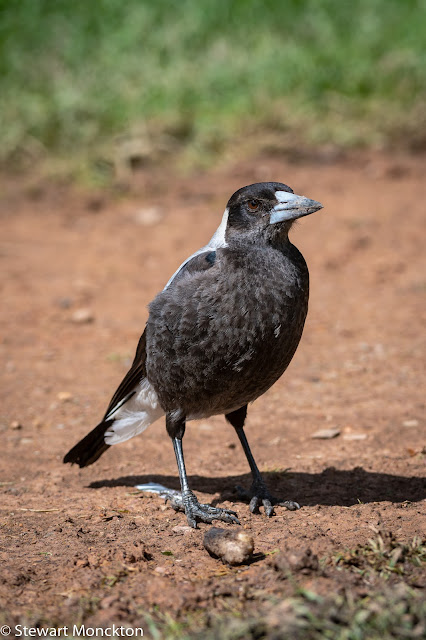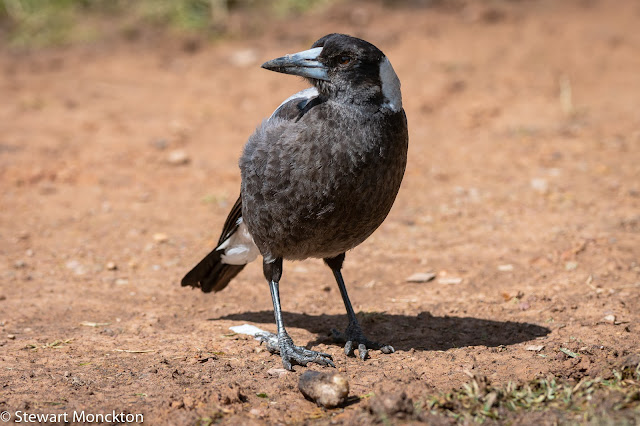Post 3 in my Robins of Victoria Series.
So, lets end WBW for 2022 with a rather splendid and colourful bird - the Flame Robin (Petroica phoenicea). The Flame Robin is a small passerine bird native to Australia. It is a moderately common resident of the coolest parts of south-eastern Australia, including Tasmania. However, its population is declining so all is not completely well with this species. I suspect that habitat lose and fragmentation are the usual suspects in this decline.
This species is similar to the Scarlet Robin, but the Flame Robin has a smaller white patch over its beak, and the red on the chest extends higher into the next.
 |
| This is a female. |
Well, the next WBW will be in 2023. To join in this one click on the button below. I hope everyone is well, warm (or cool, depending on location) and that we can keep put little community ticking along for another year. All the best. SM

























































